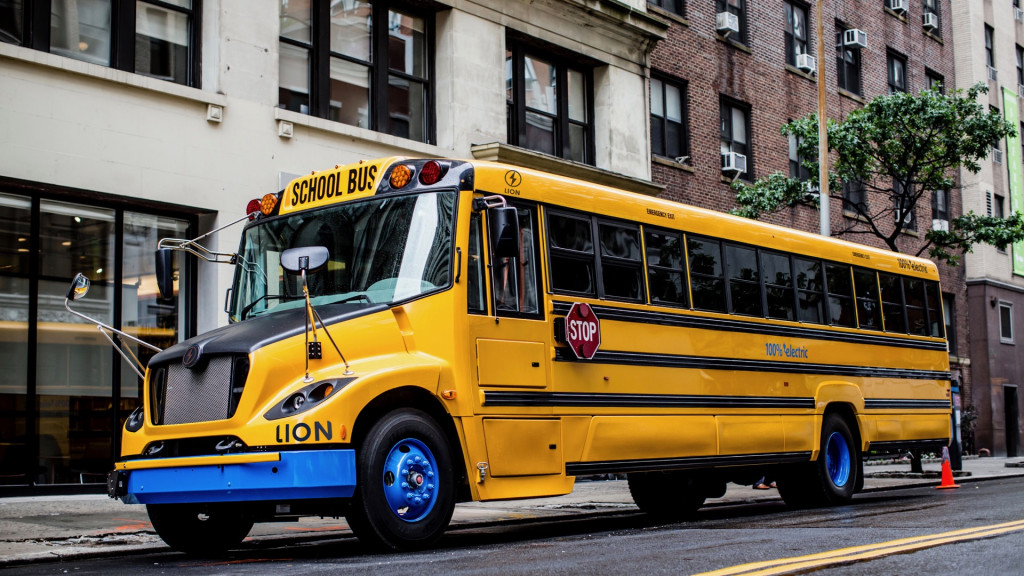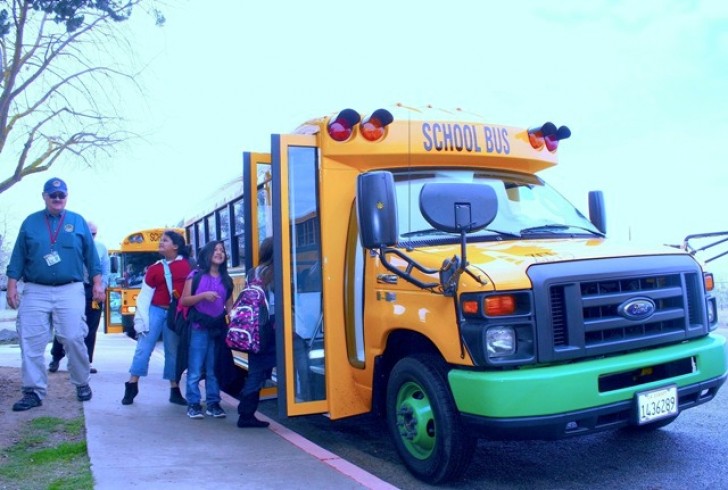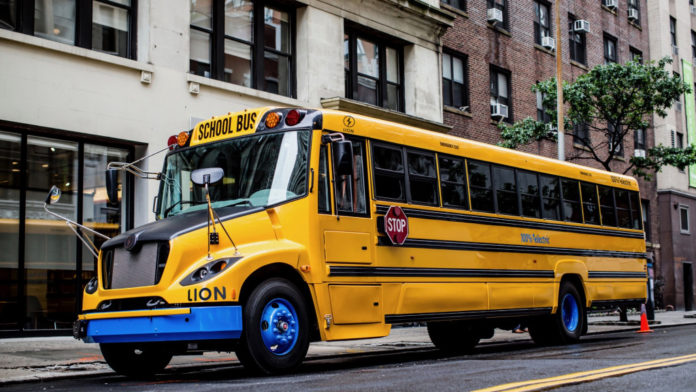The EPA last week announced $500 million in funding for electric school buses. It\’s the first installment of $5 billion for low- and zero-emission school buses over the next five years as part of President Biden\’s Bipartisan Infrastructure Law.
The agency began accepting applications from school districts and other stakeholders May 20, 2022 and will continue through August 19, 2022. In a press release, the EPA said it will prioritize applications that will replace internal-combustion buses serving \”high-need local education agencies, Tribal Schools, and rural areas,\” although actual funding in the form of rebates will still be awarded through a lottery system.
In addition to new buses, rebates can also be applied to charging hardware, the EPA said.

Lion C electric school bus
Most current school buses are diesel-powered, and diesel exhaust has been linked to asthma and other health hazards, the EPA noted. Electric buses will also reduce greenhouse gas emissions, lower operating costs for school districts, and potentially help balance the grid through bidirectional charging, the EPA said.
School buses are the largest form of public transportation, with 480,000 in service every school day, but fewer than 1% are currently electric, according to the United States Public Interest Research Group (USPIRG). Replacing all current diesel buses with EVs would avoid roughly 8 million metric tons of greenhouse gas emissions per year, the group said.
The EPA asserts that bidirectional charging could give electric school buses a role in balancing the grid. Such a large fleet would provide plenty of battery capacity to absorb excess energy during periods of low demand and discharge it during periods of high demand, keeping generating infrastructure running at a more stable level, the group said. It could also increase use of renewable energy, which works best with battery buffers.

Electric school bus from Kings Canyon Unified School District, California
Electric school buses are no longer a fringe option for environmental-activist school officials. The first ones hit U.S. streets in 2014, and existing bus makers like Blue Bird have been building them in small but growing numbers. Before the federal government stepped in, the Volkswagen diesel settlement also helped enable some of the shift to electric school buses.
That shift is gaining momentum. A Lion Electric plant for electric school buses is shaping up to be one of the largest in the U.S., and Boston is aiming for a 100% electric city fleet by 2030—including school buses. With more funding via the Bipartisan Infrastructure Law, will the move toward electric school buses accelerate further?









